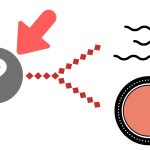How Sex Became a Thing: The Evolutionary Origins of Sexual Reproduction.
Sexual reproduction is a defining feature of life on Earth, but it wasn’t always the dominant form of reproduction. So, how did sex become a thing? In this article, we’ll dive into the evolutionary origins of sexual reproduction, exploring how and why it evolved, and why it has become a cornerstone of biological diversity.
The Beginning of Life: Asexual Reproduction
Before sexual reproduction, life on Earth primarily relied on asexual reproduction. In this simpler process, an organism creates a genetically identical copy of itself, effectively cloning its own DNA. Asexual reproduction is efficient and straightforward, but it has one major drawback: it lacks genetic diversity.
The Rise of Sexual Reproduction
The evolution of sexual reproduction introduced a game-changing mechanism in the biological world: the mixing of genetic material from two individuals. But why did sex evolve in the first place?
Advantages of Sexual Reproduction
- Genetic Diversity: Sexual reproduction creates offspring with unique combinations of genes, increasing the chances of beneficial traits that can help species survive environmental pressures, diseases, and predators.
- Adaptation and Survival: The genetic variation produced by sexual reproduction gives populations a better chance of adapting to new challenges, such as climate change or new predators. This adaptability is key to the long-term survival of a species.
- Elimination of Harmful Mutations: By mixing the genes of two parents, sexual reproduction can help eliminate or reduce the impact of harmful mutations. This process ensures that negative traits do not accumulate in a population over time.
How Sex Became the Norm
While asexual reproduction is still present in some organisms, sexual reproduction has become the norm for most complex life forms, including plants, animals, and humans. The benefits of genetic diversity and adaptability outweighed the efficiency of asexual reproduction, leading to the widespread adoption of sex as a reproductive strategy.
Exceptions and Variations
Despite its prevalence, sexual reproduction is not universal. Some organisms switch between sexual and asexual reproduction depending on environmental conditions. Others, like certain bacteria, have developed unique methods of genetic exchange that mimic some of the benefits of sexual reproduction without the need for two sexes.
Conclusion
The evolution of sexual reproduction is a remarkable story of adaptation and survival. By introducing genetic diversity, sex has become a key factor in the success and resilience of life on Earth. Understanding how sex became a thing not only sheds light on the complexity of life but also on the intricate processes that drive evolution.
Click Here.… for More Information



